About Hokkaido
The northernmost of Japan’s four main islands, renowned for volcanoes, natural hot springs and ski resorts
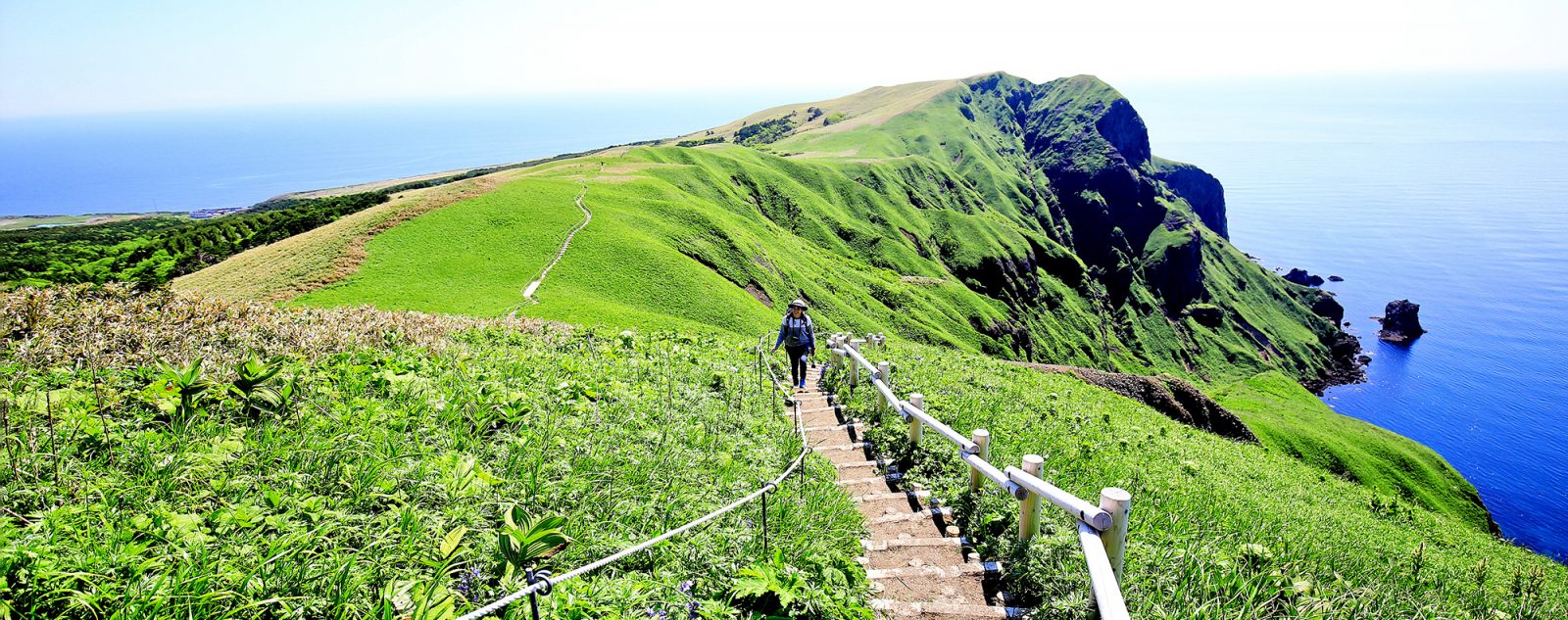
Surrounded by the Sea of Okhotsk, the Sea of Japan, and the Pacific Ocean, Hokkaido is the northernmost of Japan’s four main islands and is famous for its volcanoes, natural hot springs, and ski resorts. Hokkaido has an abundance of nature. Don’t miss the Shiretoko Peninsula, a World Natural Heritage Site, or the dramatic slopes and steam vents of the volcanic Mount Asahi in Daisetsuzan National Park. Shikotsu-Toya National Park is home to caldera lakes, geothermal hot springs and Mount Yotei, known as “the Mount Fuji of Hokkaido”.The island also boasts popular ski resorts in Niseko, Rusutsu and Furano. In addition to the rich nature and beautiful scenery that can be seen throughout the year, the natural hot springs are an essential part of any visit to Hokkaido. The island is a paradise for hot spring lovers and has the largest number of hot springs in Japan thanks to its abundant, wide-ranging spring water. One of the highlights of hot springs in Hokkaido is the spectacular views of magnificent natural scenery that transforms with the seasons. When it’s time to relax at the end of a long day of traveling, there are a wealth of options to choose from, from resorts with spacious baths to secluded inns off the beaten track.
Traveling to Japan
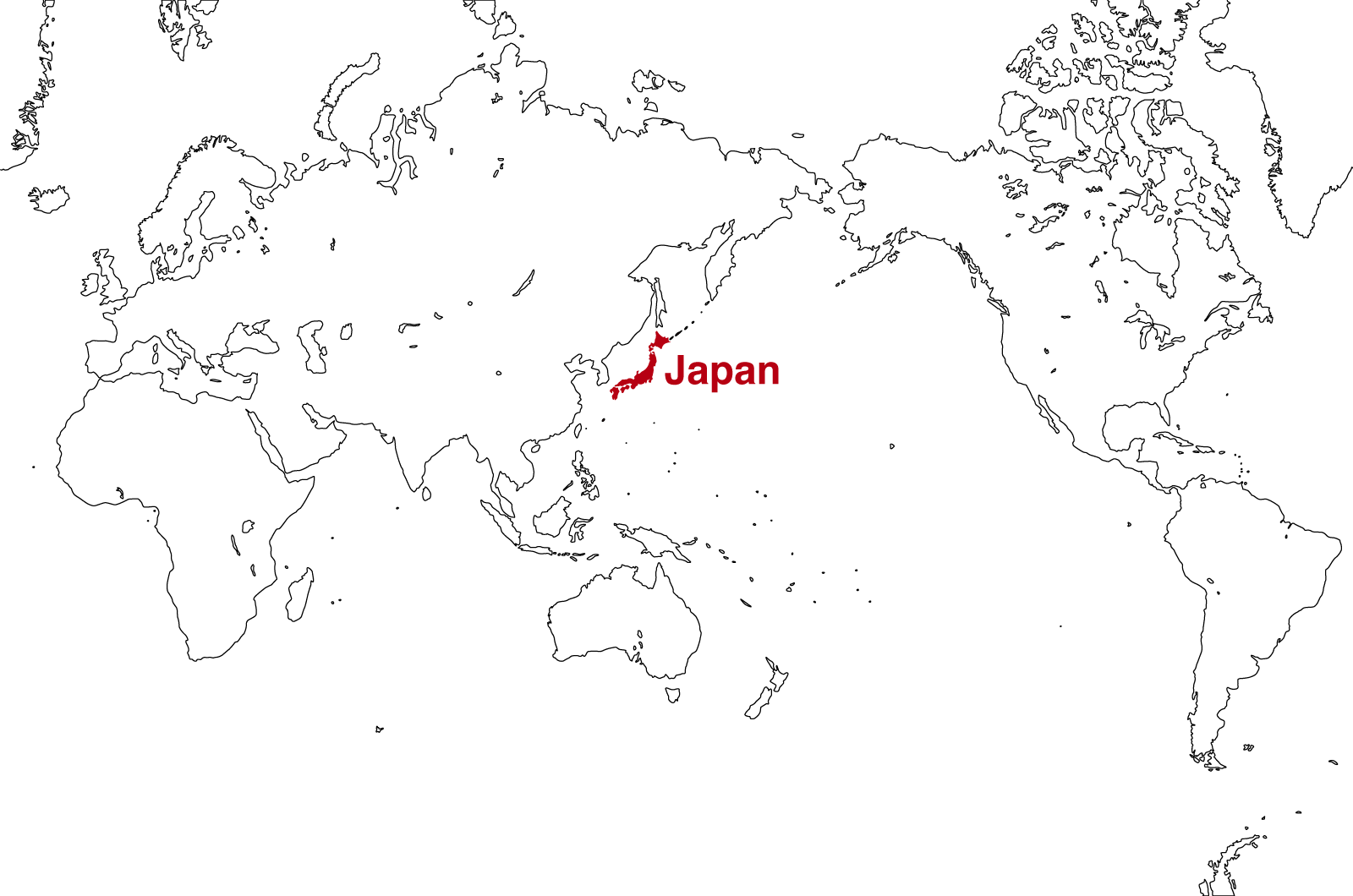
Estimated flight times
East Asia
| South Korea (Seoul) | 2 hr. 30 min. |
| China (Shanghai) | 3 hr. |
| Taiwan (Taipei) | 4 hr. |
| Hong Kong | 5 hr. |
| Macao | 5 hr. |
| Mongolia | 5 hr. 30 min. |
Southeast Asia
| Philippines (Manila) | 4 hr. 30 min. |
| Vietnam (Hanoi) | 5 hr. |
| Thailand (Bangkok) | 6 hr. 30 min. |
| Cambodia | 6 hr. 30 min. |
| Singapore | 7 hr. |
| Myanmar | 7 hr. |
| Malaysia (Kuala Lumpur) | 7 hr. 30 min. |
| Indonesia (Bali) | 7 hr. 30 min. |
South Asia
| India | 8 hr. 45 min. |
| Sri Lanka | 9 hr. 20 min. |
North America
| Canada (Vancouver) | 8 hr. 30 min. |
| Canada (Toronto) | 12 hr. |
| United States (Los Angeles) | 10 hr. |
| United States (New York) | 12 hr. 45 min. |
| Mexico | 12 hr. 30 min. |
Oceania
| Guam | 3 hr. 45 min. |
| Saipan | 3 hr. 30 min. |
| United States (Hawaii) | 7 hr. |
| Australia (Gold Coast) | 8 hr. 50 min. |
| Australia (Sydney) | 9 hr. 45 min. |
| New Zealand | 10 hr. 30 min. |
Europe
| Poland | 11 hr. 30 min. |
| Austria | 11 hr. 45 min. |
| Germany | 12 hr. |
| Belgium | 12 hr. |
| UK | 12 hr. 30 min. |
| France | 12 hr. 30 min. |
| Italy | 12 hr. 30 min. |
| Switzerland | 12 hr. 30 min. |
| Spain | 14 hr. 30 min. |
Northern Europe
| Finland | 10 hr. |
| Denmark | 11 hr. 20 min. |
Russia
| Moscow | 10 hr. |
| Vladivostok | 2 hr. 30 min. |
Seasons and Climate
The majority of the Japanese archipelago lies in the temperate zone, meaning that it is relatively warm and experiences a large amount of rainfall. However, weather conditions vary significantly depending on the region or the season. This is partly due to the fact that Japan covers a long latitude range (approximately 25 degrees). The country’s many mountain ranges also have an impact on the climate of the surrounding areas.
Hokkaido is the most northernmost of Japan’s four main islands and has a mostly humid continental climate. The relatively mild heat and humidity mean that summers are generally more comfortable than in other parts of Japan, however, the island experiences severe cold and large amounts of snowfall in winter.
Source: Japan Meteorological Agency (1991 – 2020)
Source: Japan Meteorological Agency
Spring
■ Tokyo
(March – May)
In spring, the weather starts to get warmer as the cold of winter recedes. While temperatures above 15°C (59°F) are common during the day, there can be a significant difference between daytime and nighttime temperatures. The cherry blossom season is generally around late March and early April.
What to Wear
・Sweater or cardigan
・Jacket or light coat
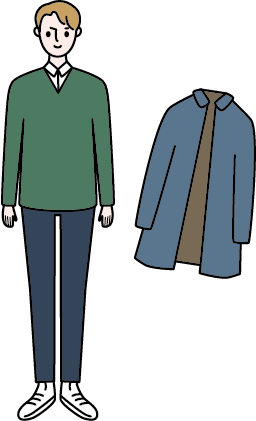
■ Sapporo
(April – May)
In early April, the weather remains relatively cold and snow can still be seen on the ground. Although the weather begins to get warmer at the start of May, morning and nighttime temperatures can be significantly lower than during the day.
The cherry blossom season is generally around late April and early May.
What to Wear
・Heavy coat in April
・Gloves, scarf, etc.
・Waterproof shoes
・Jacket or light coat in May
・Sweater or cardigan for layering

Summer
■ Tokyo
(June – August)
Tokyo’s rainy season lasts from early June to mid-July. This is followed by a period of high humidity, during which temperatures regularly exceed 30°C (86°F) for several days in succession and temperatures of over 35°C (95°F) are not uncommon. Even at night, temperatures regularly remain above 25°C (77°F).
What to Wear
・T-Shirt
・Sunscreen, hat and sunglasses

■ Sapporo
(June)
Although there are some warm days in late May and early June, summer has not yet started in earnest and temperatures may drop suddenly. Hokkaido’s rainy season, known as Ezo tsuyu, lasts for about two weeks between June and July.
What to Wear
・Shirt or t-shirt
・Jacket or cardigan for layering
・Hooded sweater

(July – August)
During July and August, Hokkaido’s pleasant summer weather attracts many visitors from all over Japan who are looking to get away from the stifling heat and humidity found elsewhere in the country. Maximum daytime temperatures can exceed 30°C (86°F), with slightly cooler mornings and evenings. Peak temperatures last for about two weeks, and the weather starts grow colder around late August.
What to Wear
・T-Shirt
・Sunscreen, hat and sunglasses
・Long sleeve shirt for layering in late August

Autumn
■ Tokyo
(Spring- October)
This period is known as typhoon season, and low pressure systems bring heavy rain and strong winds to the city. September is still relatively hot, with slightly cooler temperatures and a number of pleasant sunny days in October. Colorful autumn leaves can be seen from late October to early November.
What to Wear
・T-Shirt in September
・Long sleeve shirt in October
・Jacket or sweater in November
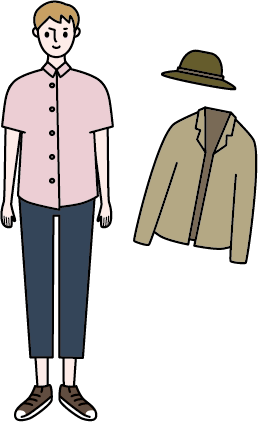
■ Sapporo
(September – October)
It becomes pleasant weather in October in Hokkaido. The weather in Japan in September and October can
In September, temperatures are slightly cooler and more comfortable than in summer.
Typhoons are not as frequent as on Honshu and cyclones that do reach Hokkaido from the south are weakened after having travelled over the reset of Japan.
Colorful autumn leaves can be seen in late September and October. Temperatures can also drop suddenly over the course of the day during this time.
What to Wear
・Light jacket or sweater in September
・Coat in October

Winter
■ Tokyo
(December – February)
Temperatures are colder than in the autumn months. There is occasional snowfall, but snow rarely accumulates on the ground. The weather is relatively dry, with limited rainfall and a large number of sunny days.
What to Wear
・Sweater
・Coat
・Gloves, scarf, etc.
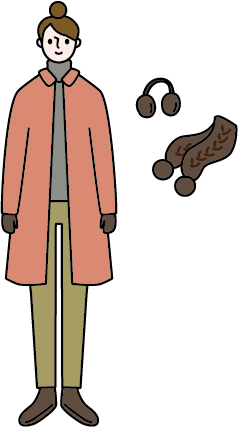
■ Sapporo
(November – March)
It starts to snow around late October and early November. In December, snow begins to accumulate on the ground as the average temperature falls below zero. January and February are the coldest months, with temperatures of -10°C (14°F) or lower. The snow starts to melt from late March.
What to Wear
・Sweater or cardigan as an inner layer
・Thick coat or down coat
・Winter hat, gloves, scarf, etc.
・Waterproof winter boots with non-slip solesboots
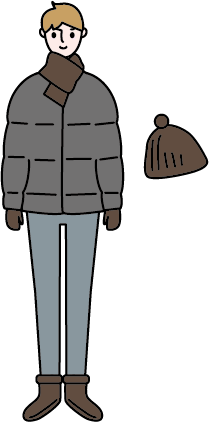
Travel to Hokkaido from within Japan
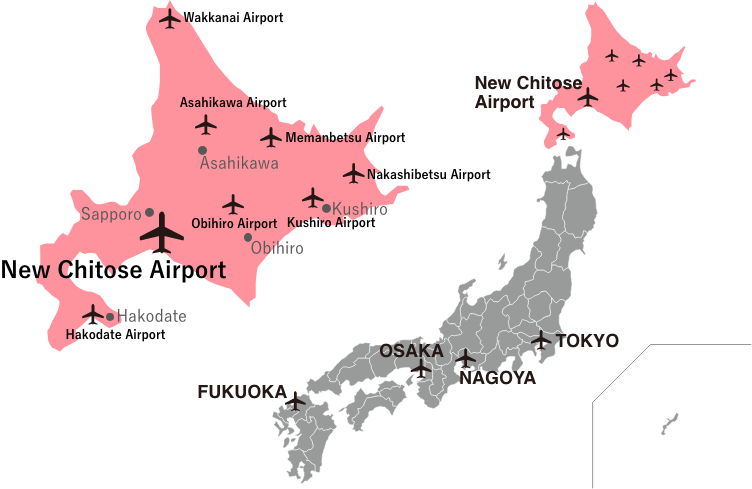
Estimated flight times
Tokyo
| New Chitose Airport | 1 hr. 35 min. |
| Nakashibetsu Airport | 1 hr. 50 min. |
| Tancho Kushiro Airport | 1 hr. 45 min. |
| Hakodate Airport | 1 hr. 25 min. |
| Memanbetsu Airport | 1 hr. 45 min. |
| Asahikawa Airport | 1 hr. 45 min. |
| Obihiro Airport | 1 hr. 45 min. |
| Wakkanai Airport | 1 hr. 55 min. |
Osaka
| New Chitose Airport | 2 hr. |
| Hakodate Airport | 1 hr. 40 min. |
| Memanbetsu Airport | 2 hr. 55 min. |
Nagoya
| New Chitose Airport | 1 hr. 45 min. |
| Hakodate Airport | 1 hr. 35 min. |
| Asahikawa Airport | 2 hr. |
Fukuoka
| New Chitose Airport | 2 hr. 30 min. |
Travel within Hokkaido
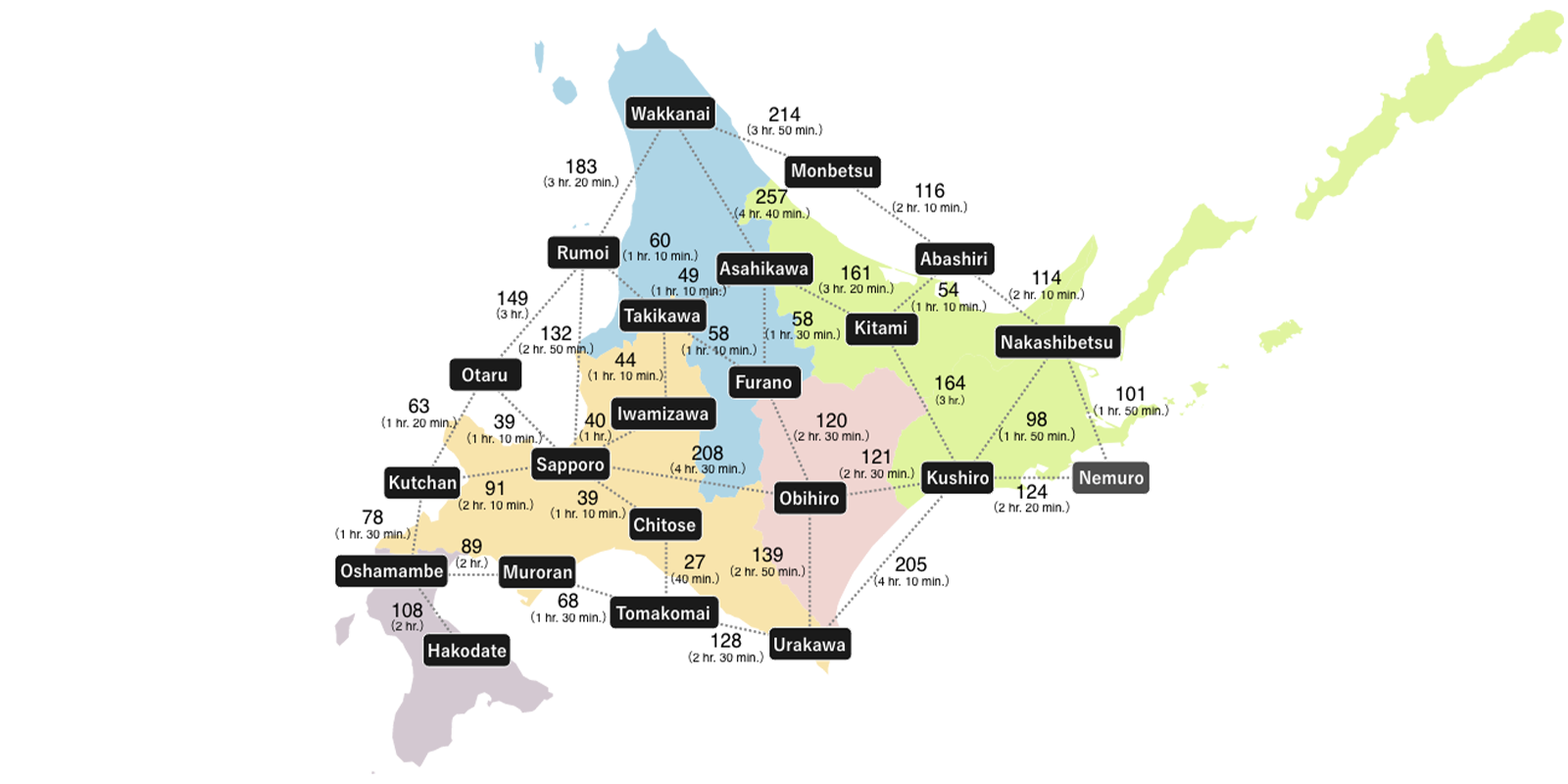
The map shows the shortest routes when traveling along national highways.
Distances are in km, times in parentheses are estimated travel times.

